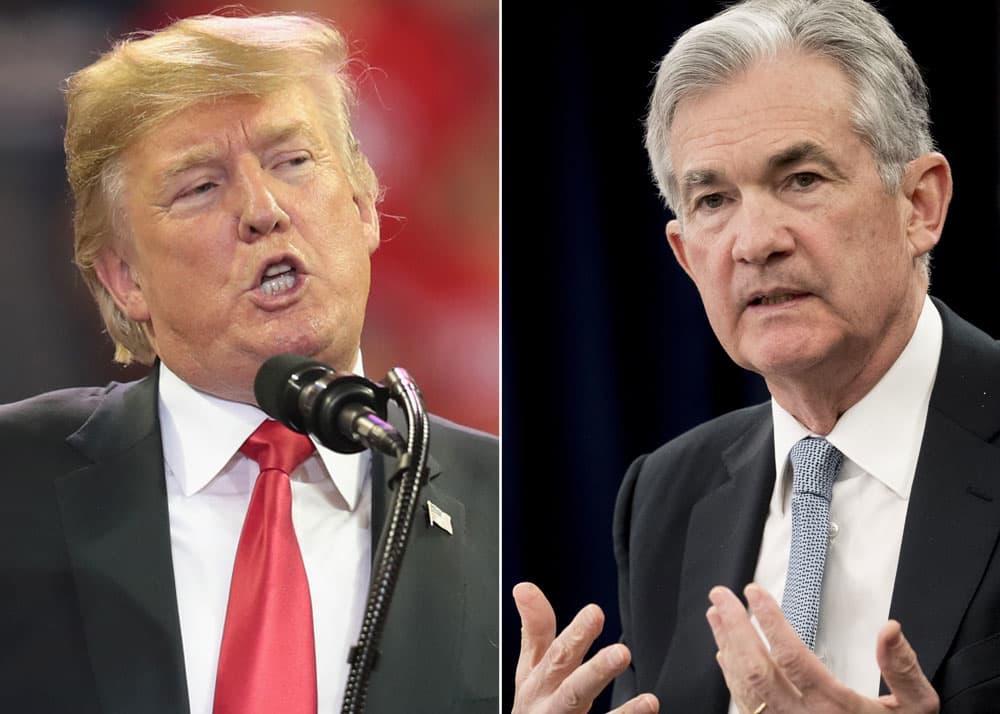Donald Trump and Jerome Powell
Getty Images
Cutting interest rates to zero would throw savers under the bus.
Greg McBride
Bankrate.com
Since the recession, rising rates have paved the way for pay raises and a better return on savings, despite the impact on borrowing costs.
And still, interest rates are historically low, which leaves the central bank with little wiggle room in the event of a recession or if the economy stumbles. The current target range for its overnight lending rate is 2% to 2.25%.
“Cutting interest rates to zero would throw savers under the bus,” McBride said.
Saving vs. borrowing
Only recently have savers started to benefit from higher deposit rates — the annual percentage yield banks pay consumers on their money — after those rates hovered near rock bottom for years.
The prime rate, which is the rate that banks extend to their most creditworthy customers, is typically 3 percentage points higher than the federal funds rate. That not only determines your savings rate, but also the rate used for many types of consumer loans, particularly credit cards.
Since the central bank raised the federal funds rate nine times in three years, the highest- yielding saving accounts are now paying more than 2.5%, up from 0.1%, on average, before the Fed started increasing its benchmark rate in 2015.
If the Fed lowers its benchmark rate to zero, that would erode recent gains in savings rates immediately, McBride added.
“If you cut rates too far, then we go back to a situation where savers are being punished through a loss of buying power,” he said.
More from Personal Finance:
Half of student loan borrowers worry they’ll be in debt forever
Don’t pat yourself on the back for saving
Average FICO score hits all-time high
On the flip side, credit card holders wouldn’t see much benefit from zero rates, even though most credit cards have a variable rate, which means there’s a direct connection to the Fed’s benchmark rate.
With APR’s still near record highs, “for people carrying a balance, it’s not going to make credit card debt a bargain,” McBride said.
Mortgages
Mortgage rates are already substantially lower since the end of last year, but they could also come down further with a significant rate cut.
The economy, the Fed and inflation all have some influence over long-term fixed mortgage rates, which generally are pegged to yields on U.S. Treasury notes.
That means that if you bought a house in the last few years, it could be a good time to consider refinancing at a lower rate.
As it stands, the Fed is expected to approve another quarter-point rate cut at its meeting next week.
